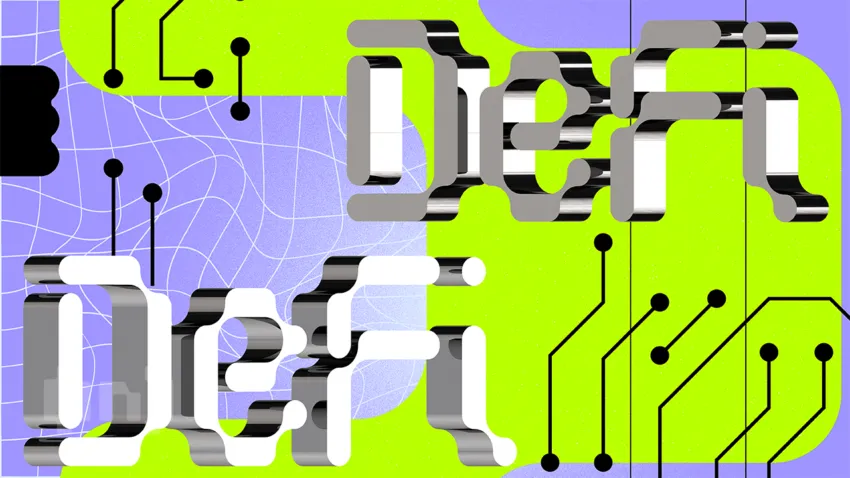In the ever-evolving landscape of DeFi, community building is more than a buzzword — it’s the backbone of any successful project. Traditional financial institutions have relied heavily on centralized systems and stringent regulations. The DeFi movement aims to disrupt this model.
However, decentralized finance or DeFi protocols are only as robust as the communities that support them. Here’s why community growth is pivotal for DeFi projects.
- Why are the key community growth factors for DeFi?
- Defining your DeFi community goals
- Scaling your DeFi community
- Navigating challenges and handling conflict in DeFi communities
- Sustaining long-term growth in DeFi community building
- Successful DeFi community building is a long-term endeavor
- Frequently asked questions
Why are the key community growth factors for DeFi?

- Trust and credibility: In a decentralized project, trust is often distributed among community members rather than a single entity. This creates a self-policing environment where bad actors are naturally filtered out.
- Speed of innovation: Financial services have been slow to adapt to changes. Meanwhile, DeFi applications have ushered in unprecedented innovation. This is largely fueled by the collaborative work of community members who can quickly test and implement new features. Distributed ledger technology and the ethos of open-source code make this pace possible.
- Network effect: DeFi communities are vital in expanding the user base. When building a solid community, each member adds value by attracting more participants, creating a network effect.
- Knowledge sharing: DeFi can be overwhelming for newcomers due to technical terms like blockchain, smart contracts, and digital assets. An active community is a valuable resource for beginners to grasp distributed ledger technology’s advantages.
- Feedback loop: One of the challenges in traditional financial services is the long loop of feedback and implementation. In a DeFi community, user feedback is immediate and can be acted upon swiftly, thanks to smart contracts and blockchain technology.
Defining your DeFi community goals
Whether creating DeFi lending protocols or a blockchain asset management platform, set clear, actionable goals. This is vital for effective community management and positioning your defi project as an alternative to traditional financial services.
- Financial inclusivity: One common goal might be to lower the barriers to entry into the financial world, bringing services to those underserved by traditional finance.
- Transparency and trust: Utilizing blockchain technology and smart contracts can foster an environment of transparency.
- Innovation and scalability: Many projects aim for technological innovation, with an eye on the scalability of blockchain marketing to reach a wider audience.
The most successful #blockchains, #DAOs, #NFT projects, #defi protocols, and #decentralized markets all have one thing in common: they are powered by engaged communities.
Victor Akikwu: LinkedIn
Identifying target audience and user personas
Understanding who you are building for is as important as what you are building. With the rise of DeFi applications, a new generation of digital natives is ready to explore alternative financial ecosystems built on blockchain technology.
- Crypto enthusiasts: These folks who have been in the space for a while understand the nuances of digital assets and are looking for sophisticated DeFi protocols to invest in or use.
- The unbanked and underbanked: There’s a huge market of people with limited access to traditional financial institutions. These individuals find value in P2P financial services that can be accessed via social media or other web3 platforms.
- Traditional finance migrants: These are people dissatisfied with the current financial services landscape and want to transition to decentralized finance communities for more autonomy and fewer fees.
Building a strong foundation entails understanding your project’s goals. Once you’ve clarified your goals and identified your target audience, you can more effectively engage in community-building efforts, enhancing your project’s visibility and credibility within the broader web3 ecosystem.
Crafting your DeFi community strategy
How do you build a robust and engaged community? Let’s delve into some key elements you should consider in crafting your DeFi community strategy.
Choosing the right platforms and protocols

- Research existing ecosystems: Before diving into community building, scrutinize the blockchain-based platforms and protocols available. Your choice will influence the kinds of smart contracts you can execute and the P2P interactions you can facilitate.
- Compatibility with goals: Align the chosen platforms with the long-term vision of your DeFi applications. For example, Ethereum’s extensive toolsets and developer community could be ideal if you aim to disrupt traditional finance.
Your choice of DeFi platforms and protocols will set the stage for the kinds of financial services you offer and the user experience you deliver.
Establishing clear communication channels
- Central hub: Create a central hub for information and updates, perhaps a website or a blog, to disseminate critical announcements, tutorials, and updates.
- Real-time communication: Utilize real-time channels like Discord or Telegram for urgent community management needs and P2P interactions.
Maintaining open and transparent channels is crucial when trying to market your crypto project. Community members appreciate transparent operations, and clear channels allow for this.
Social media platforms
Platform selection: Choose platforms that align with your target audience. LinkedIn might be apt for connecting with financial institutions, while Twitter and Reddit could offer a more informal setting.
Leveraging social media platforms is non-negotiable in today’s digital age. Proper usage can catapult your DeFi project into the mainstream, ensuring a robust community of engaged members.
Forums and online communities
Topic-specific channels: Establish topic-specific channels or sub-forums to discuss different aspects of your project, from technical developments to bear market predictions.
Forums and online communities provide a space for in-depth discussions, fostering an engaged community member base. They are excellent platforms for sourcing community opinions and conducting AMAs (Ask Me Anything sessions).
Newsletters and email lists
Regular updates: Send out newsletters with frequent updates on the state of the project, governance proposals, or upgrades in the pipeline.
A well-crafted newsletter can do wonders for keeping your community engaged, bridging the gap between you and your members in a less transient manner than social media posts.
Building a compelling brand identity for your DeFi community
Vision statement: Make sure your DeFi community understands the project’s vision. It’s not just about digital assets; it’s about revolutionizing the world of financial services.
Your brand identity is the face of your decentralized project. It gives you a distinct voice amidst many DeFi communities, reinforcing your credibility and fostering a sense of community ownership.
Link-building
Link building is a tried-and-tested way to increase your crypto project’s visibility for search engines. This SEO tactic helps you improve your website’s domain authority and drive more traffic to your site. This can be done with an in-house team or by hiring a specialized web3 marketing agency.
Onboarding community members
Building a robust DeFi community requires both technical expertise and social engineering. A community is the lifeblood of any DeFi project, forming the foundation upon which the network’s credibility and utility rest.
Therefore, attracting an engaged community can set your crypto project apart and legitimize it in the broader financial services ecosystem.
Creating engaging content to spark interest
- Educational blog posts: These can serve as a stepping stone for community members transitioning from traditional finance. Cover subjects like smart contract details, DeFi apps, and the differences between DeFi and traditional financial services.
- Video tutorials and webinars: Videos are dynamic in conveying complex information. Since DeFi often involves dealing with blockchain-based platforms, distributed ledger technology, and digital assets, videos can be particularly helpful. Host webinars to provide live demonstrations of how your decentralized project operates. Engage with the community member base through Q&A sessions to address common questions and concerns.
- Infographics and visual content: Create visuals explaining DeFi protocol workflow and benefits and the mechanics of distributed ledger technology.
- Hosting virtual events and workshops: Community engagement takes more than online posts. It requires active community management. Hosting virtual events and workshops can provide practical, hands-on experience with your DeFi project. This educates and builds a sense of community and belonging, vital elements in fostering strong DeFi communities.
- Implementing effective referral programs: Referral programs offer existing community members incentives to bring in new participants. This is particularly important in a P2P network where growth usually occurs organically through word of mouth.
Therefore, successful community building requires educational content, interactive learning, and strong community management.
Ready to find out how BeInCrypto can boost your crypto project? Contact us today.
Encouraging meaningful engagement and participation
- Community forums: Building a strong online forum for your DeFi project can serve as the bedrock for meaningful conversations. Encourage community members to discuss the blockchain-based technology, smart contracts, and financial services offered by your project.
- Web3 integration: Consider using web3 technologies for seamless P2P interactions, infusing your traditional community management methods with the decentralized spirit that DeFi communities appreciate.
AMA (Ask Me Anything) sessions
- Regular scheduling: Holding regular AMAs with the core team or even other experts in blockchain technology and distributed ledger technology can build trust and keep the community updated.
- Financial institution partnerships: Occasionally, you can even collaborate with representatives from traditional financial institutions to hold joint AMAs, offering a diversified perspective on how DeFi protocols can potentially integrate with or disrupt traditional financial services.
Q&A threads and polls
- Timely updates: Before introducing new features or modifications to your DeFi applications, host Q&A threads on social media platforms to collect feedback.
- Community polls: Use polls to gauge community interest in potential new digital assets to be added or changes in smart contract protocols.
Recognizing and rewarding active community members
- Gamification strategies: Implementing gamification techniques can motivate members to be more active. For example, introduce digital assets as rewards for those contributing high-quality content or ideas.
- Community contributor badges: Use badges to recognize members who are particularly active, skilled in P2P interactions, or contribute positively to the community in other ways.
Collaborating with influencers and thought leaders
- Social media partnerships: Partner with social media influencers with a strong understanding of blockchain technology and decentralized finance or DeFi.
- Webinars and online events: Co-host webinars or other online events with thought leaders in the space. Not only will this provide value to your community, but it also adds credibility to your project.
The amalgamation of these strategies can serve as a comprehensive approach to building a strong, engaged community around your DeFi project. And remember, an engaged community often becomes the best web3 marketing tool, eclipsing even the most high-budget strategies traditionally employed by financial institutions.
Scaling your DeFi community
Building a strong DeFi community is akin to constructing a resilient, decentralized project, one block at a time. However, a static approach won’t cut it. You need to evolve, adapt, and scale. Here’s how to do it strategically:
Analyzing community data and metrics
You can’t manage what you can’t measure. When it comes to DeFi communities, data is your best friend. Utilizing web3 and blockchain technology, you can access various metrics unavailable to traditional finance models.
- Community member activity: Use DApps and smart contracts to track user engagement and the actual usage of your DeFi applications.
- Financial transactions: Keep an eye on the volume and type of P2P transactions to better understand the financial services your community values.
- User onboarding rates: Closely monitor how many users migrate from financial institutions and traditional finance ecosystems to your DeFi protocols.
User growth and engagement rates
The lifeblood of any decentralized project is its active community. User growth can’t just be a vanity metric; it must translate into genuine engagement.
- Social media: Utilize platforms like Twitter, Reddit, and Telegram to facilitate conversations around your blockchain-based projects.
- Digital assets utilization: Encourage your community to use your tokens or other digital assets within your ecosystem.
- Webinars and AMAs (Ask Me Anything): Offer exclusive knowledge-sharing sessions to deepen community involvement and establish authority.
Feedback and sentiment analysis
Your community members are your best critics and your strongest advocates. Embrace a feedback-rich culture.
- Feedback loops: Use decentralized voting or governance models to involve your community in decisions that shape the project.
- Sentiment analysis: Leverage AI tools to gauge community sentiment from social media and forum discussions.
Expanding to multilingual and global communities

DeFi is not confined by geographical barriers, and your community shouldn’t be either. Embrace distributed ledger technology’s potential for true globalization.
- Localization: Translate your DeFi applications and content to cater to non-English speaking demographics.
- Global ambassadors: Appoint region-specific community leaders to adapt your community management strategies to local needs and cultural nuances.
Creating subgroups and special interest segments
As you scale, your community will naturally diversify. Creating subgroups can make your community more manageable and tailored.
- Interest-based segments: Whether it’s NFTs, a crypto affiliate marketing program, or P2P lending, create sub-communities where like-minded individuals can dive deep.
- Role-based subgroups: Differentiate between beginners, developers, traders, and other unique roles within your community to provide a more tailored experience.
By integrating these strategies, you’ll not only scale your DeFi community but also make it more robust, diversified, and aligned with your project’s mission.
Navigating challenges and handling conflict in DeFi communities

While the promise of this new, distributed ledger technology-driven world is alluring, community management within these evolving ecosystems presents its unique set of challenges.
Addressing misinformation and FUD (fear, uncertainty, doubt)
- Fact-based communication: Misinformation can cripple any decentralized project. Counteracting this requires building a strong repository of credible, easy-to-understand information. Consider publishing FAQs, whitepapers, and tutorials that are accessible to both new and seasoned community members.
- Transparency: Financial institutions are often perceived as opaque, something DeFi protocols aim to correct. Regular updates about the state of the project, ideally on blockchain technology for verifiable transparency, can go a long way in alleviating FUD.
- Engagement with thought leaders: Establish partnerships with respected voices in the DeFi and broader financial services community. Their endorsement can act as a powerful tool against misinformation.
The dynamic nature of DeFi applications means that fear, uncertainty, and doubt (FUD) are inevitable. But as they say in traditional finance, “The market hates uncertainty.” The key is to proactively tackle FUD by remaining transparent, factual, and open in your communication strategies.
Dealing with trolls and negative behavior
- Code of conduct: Clearly outline what constitutes acceptable behavior within your peer-to-peer community. Make this easily accessible so that there’s no ambiguity about what is and isn’t allowed.
- Empowered moderators: Equip your moderators with the necessary tools and authority to enforce rules. Decentralized doesn’t have to mean lawless.
- User education: Regularly inform your community about the best practices in digital asset management, security, and how to spot potential scams or trolls.
Social media is a double-edged sword: while it is a powerful tool for community building, it’s also a breeding ground for trolls. Effective community management involves balancing open dialogue and maintaining a respectful space for discussion.
Implementing effective moderation strategies
- Automated systems: Utilize smart contracts to automate certain aspects of moderation, like flagging posts that violate the code of conduct.
- P2P review: Implement a peer review system where exemplary community members can weigh in on disputes or reports. This not only lightens the load for moderators but also reinforces the decentralized nature of your project.
- Regular audits: Periodic reviews of moderation activities ensure that the system isn’t biased and aligns with the ethos of the DeFi project.
Effective moderation is not about censorship; it’s about fostering a productive, respectful environment that reflects the revolutionary potential of web3 and decentralized finance or DeFi.
Sustaining long-term growth in DeFi community building
The lifecycle of a DeFi project is much like any business venture—evolution is the key to longevity. Given the rapid advancements in web3 technologies and blockchain-based financial services, staying static is not an option. Just looking at Google’s crypto ad policy and how it has changed the landscape, you quickly realize that things change in the blink of an eye.
So, how does one sustain long-term growth in decentralized finance communities?
Evolving your DeFi community strategy over time
In traditional finance (TradFi), financial institutions are often slow to adapt to change due to regulatory complexities and bureaucratic inertia. The decentralized finance or DeFi space, being nimbler, can afford to be more dynamic. However, that dynamism must be strategic.
- Adapt to new defi protocols: As smart contracts and decentralized protocols evolve, so should your community’s focus. Make sure you’re continuously educated about new DeFi applications that can offer more efficient financial services to your community members.
- Incorporate distributed ledger technology: Incorporating the latest in distributed ledger technology can further cement your DeFi project’s reputation as a forward-thinking initiative.
- Community management and social media: Leveraging social media not only boosts visibility but also creates channels for peer-to-peer communication among community members, fostering a stronger bond.
Staying updated with industry trends and developments
Knowledge is power, especially in a sector that’s as volatile and fast-paced as DeFi. The gap between decentralized finance and traditional finance is narrowing, with many mainstream financial institutions exploring blockchain technology.
- Web3 news outlets: Subscribe to leading web3 journals, attend webinars, and participate in relevant forums to stay ahead of industry trends.
- Networking: Building a strong network with leaders in blockchain technology can provide insider perspectives that are invaluable for the long-term growth of your DeFi project.
- Digital assets and peer-to-peer services: Understand how digital assets are changing the landscape of peer-to-peer financial services. Incorporate features that align with these trends into your community’s strategy.
Leveraging community feedback for continuous improvement
One of the strongest aspects of any decentralized project is its community. Their feedback is essentially your project’s lifeline.
- Community polls: Use decentralized voting mechanisms to let the community decide on potential changes to the DeFi protocols you employ.
- Open-source development: Encourage community member participation in refining smart contracts and other blockchain technology components of your DeFi applications.
- Monitor social media and forums: Social media channels and DeFi communities online are ripe with user feedback, criticisms, and ideas. Harness this information to refine your project continually.
In the rapidly evolving landscape of Decentralized Finance (DeFi), the significance of fostering a strong and engaged community cannot be overstated. As we’ve traversed through a comprehensive guide—from laying the foundational goals to implementing advanced growth strategies—it becomes clear that building a thriving DeFi community is a multifaceted endeavor that requires careful planning, active engagement, and ongoing adaptation.
Successful DeFi community building is a long-term endeavor
A solid community not only serves as the backbone for gaining traction and legitimacy but also becomes an invaluable resource for innovation and troubleshooting, shaping the very protocols and platforms that you use. Successful community building is not a ‘set and forget’ activity; it’s a dynamic, ever-changing process that needs to adapt to industry shifts, member expectations, and technological advancements.
Whether you’re addressing challenges like misinformation and conflict or analyzing community metrics for scaling opportunities, staying nimble and responsive is key. In a realm as revolutionary and volatile as DeFi, your community is your greatest asset, and investing in its growth and well-being is synonymous with investing in the success of your DeFi venture.
Need help building or managing a DeFi community, propelling your crypto business to new heights? Speak to our team of web3 marketing experts here.
Frequently asked questions
What is a DeFi community?
What is the importance of a community in DeFi?
How do I identify my target audience when building a DeFi community?
What are some effective ways to foster engagement within a DeFi community?
How can I ensure the long-term sustainability of my DeFi community?
Disclaimer
In line with the Trust Project guidelines, the educational content on this website is offered in good faith and for general information purposes only. BeInCrypto prioritizes providing high-quality information, taking the time to research and create informative content for readers. While partners may reward the company with commissions for placements in articles, these commissions do not influence the unbiased, honest, and helpful content creation process. Any action taken by the reader based on this information is strictly at their own risk. Please note that our Terms and Conditions, Privacy Policy, and Disclaimers have been updated.




